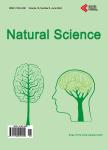Effect of SOD1 Overexpression on the 20S Proteasome during Aging
Effect of SOD1 Overexpression on the 20S Proteasome during Aging作者机构:Université Paris Diderot Sorbonne Paris Cité Adaptive Functional Biology UMR Centre National de la Recherche Scientifique Paris France
出 版 物:《Natural Science》 (自然科学期刊(英文))
年 卷 期:2016年第8卷第6期
页 面:295-304页
主 题:SOD1 Transgenic Mice Proteasome Aging Thymus Heart Neural Tissues Cerebellum
摘 要:Metabolism of oxygen derivatives has been shown to be altered in Down syndrome (DS) due to the overexpression of the Cu/Zn superoxide dismutase gene ( SOD-1) on chromosome 21. Transgenic mice for the human SOD1 gene (h SOD1) exhibit some features of the syndrome. Oxidation of proteins and oxidative stress are involved in normal and pathological aging. The proteasome is an adaptative system to eliminate the modified proteins which can be deleterious. As SOD1 overexpression has been shown to be either deleterious or protective according to tissues and paradigms, we have measured in function of age the 20S proteasome activities in neural tissues (cerebral hemisphere, cerebellum and cortex) and in the thymus and the heart from control and transgenic mice. Indeed, although SOD1 overexpression is very deleterious in thymus and heart, it has little effect in cerebral hemisphere and cortex depending on the proteolytic activity measured. Conversely in the cerebellum the three proteolytic activities decrease dramatically in transgenic old mice while it was not modified in control mice during aging. The results of this study suggest that some phenotypes of DS present in thymus, heart and neural tissues of h SOD1 transgenic mice might be partially due to the modulation of the 20S proteasome expression during aging.



